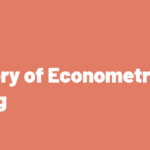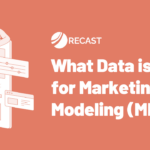People who have been around the world of marketing mix modeling (MMM) for a while are often shocked that Recast is designed to be refreshed on a weekly cadence. “How are you able to do in a week what it takes many other vendors months to do?” they might ask.
There are two main answers to this question:
- Recast uses automated data pipelines instead of manual data cleaning processes to save time on data organization
- Recast uses an advanced statistical / machine learning method known as Dynamic Hamiltonian Monte Carlo in order to analyze hundreds of millions of possible candidate models instead of using a test-and-check approach by hand
In order to really understand why Recast is able to build MMM models so quickly it’s helpful to understand the “traditional” approach to MMM. In the old world, refreshing an MMM was a long, painful and labor-intestinal process which is why MMM refreshes took so long (and why those vendors are so expensive). A traditional MMM approach might have the following steps:
- 01. Initial kick off of project
- 02. Multiple weeks or months gathering and collecting data
- 03. Multiple weeks or months cleaning and organizing the data
- 04. The actual “model build” process which involves:
- Make some assumptions about which variables to include, adstock rates, and saturation curves
- Run the model
- Look at the results
- Return to step a and repeat hundreds of times
- Look at the results
- Run the model
- 05. Choose one model from the hundreds of candidates created in step 4
- 06. Present the results of the one chosen model to the marketing leadership team
As is probably clear, this is a very labor-intensive process! It requires lots of effort from many technical people (data engineers, statisticians, and analysts) in order to complete the process. In addition to being slow, it’s also sub-optimal since the analyst or statistician is testing-and-checking different models by hand: there is lots of room for that particular analyst to shape the results based on their idiosyncratic biases and by deciding which model version they show to the client at the end of the process.
So, if that’s how it was done before, what does Recast do differently?
Recast takes a software-first approach to this problem. Instead of doing one-off data-collection projects we rely on modern cloud-data-warehouse technologies and automated data pipelines to do all of the data collection and cleaning. And from a modeling perspective, instead of having an analyst try to build a model “by hand” via the test-and-check method we use Hamiltonian Monte Carlo to test all possible model configurations and simply summarize the models that are most consistent with the data.
This means that, through the power of software, Recast is able to run and evaluate many more candidate models and then automatically determine which of those candidate models best fit the data and summarize those to the end user.
This process requires large amounts of compute power and sophisticated cloud infrastructure to manage, but it allows Recast to do in hours what a whole team of analysts wouldn’t be able to do in a hundred years.
In summary, Recast uses software, machine learning, and AI to automate the model building and refreshing process which allows the platform to build better models, faster.



